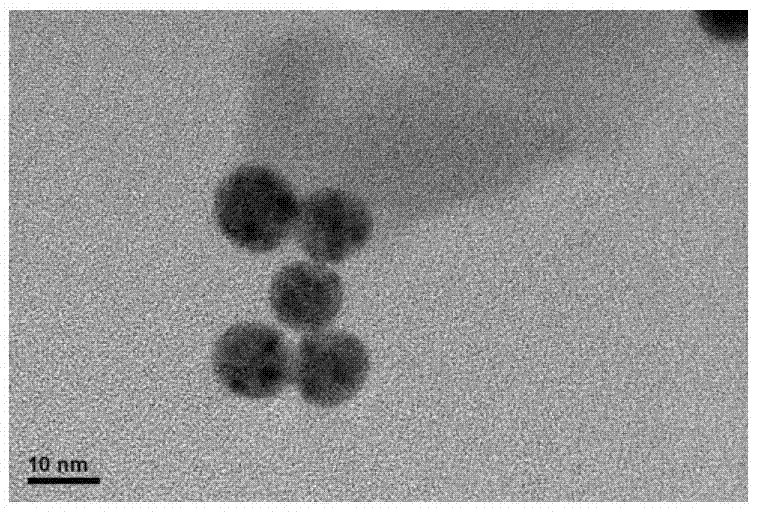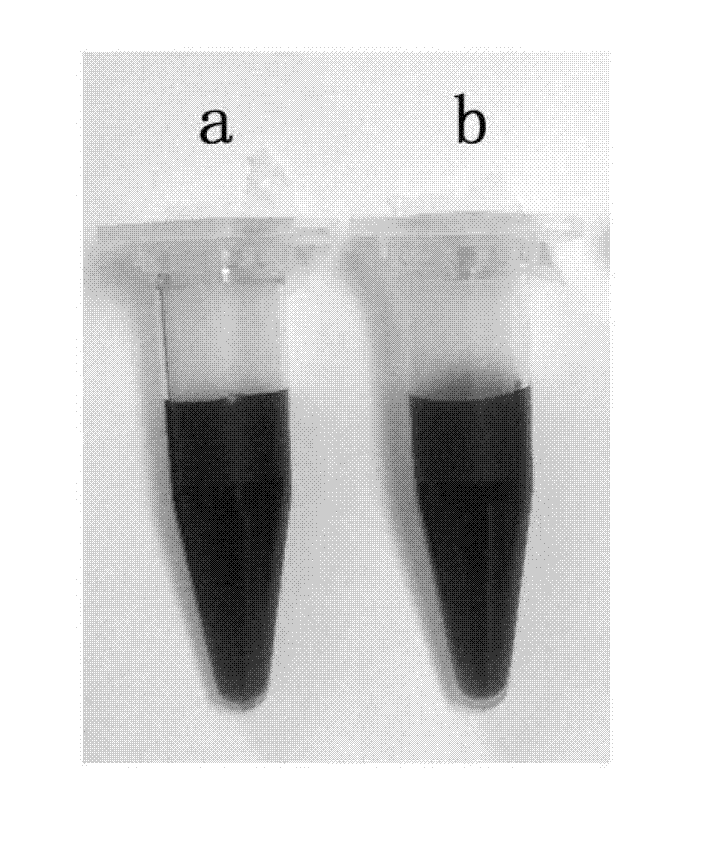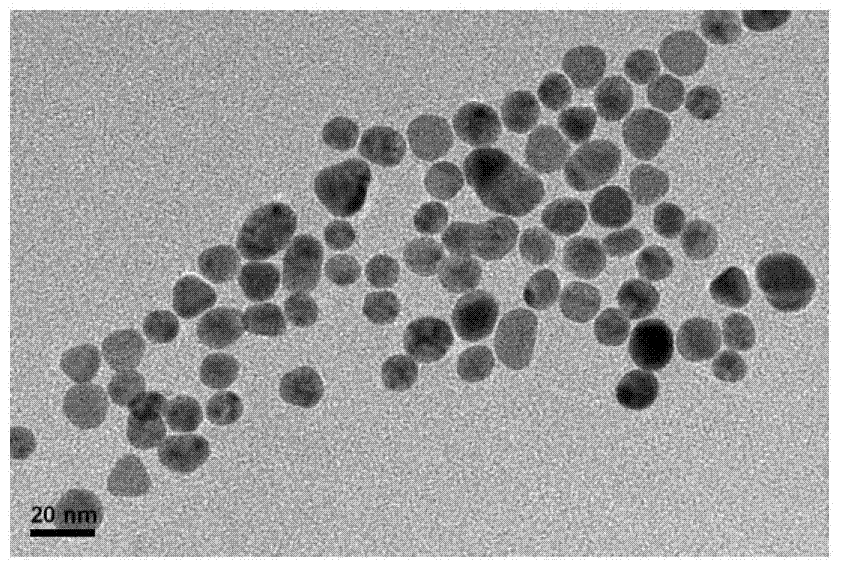Process for preparing gold nano particles through reduction of chloroauric acid by catalase
A technology of catalase and tetrachloroauric acid, which is applied in the field of preparation of gold nanoparticles, can solve the problems of easy aggregation of gold nanoparticles, large environmental impact, complex process, etc., and achieve good repeatability, environmental friendliness, and easy operation steps easy effect
- Summary
- Abstract
- Description
- Claims
- Application Information
AI Technical Summary
Problems solved by technology
Method used
Image
Examples
Embodiment 1
[0028] (1) under magnetic stirring condition, the bovine liver catalase (Aladdin Reagent Co., Ltd.) aqueous solution that concentration is 5mg / mL is added dropwise in the tetrachloroauric acid aqueous solution that concentration is 1%, until catalase and The mol ratio of tetrachloroauric acid is 0.00221: 1, magnetic stirring 4h;
[0029] (2) Add 1mol / L sodium hydroxide solution to the solution obtained in (1), adjust the pH of the solution to 10, stir in a water bath at 25°C, until the UV spectrum curve of the gold nanoparticle sol generated by the reaction does not change, The obtained gold nanoparticle sol is centrifuged at a rotational speed of 8000 r / min to obtain gold nanoparticles.
[0030] from figure 1 It can be seen that the obtained material is a gold nanoparticle with a particle size between 10-20nm; figure 2 It is shown that the generated gold nanoparticles will not agglomerate under high salt conditions (0.5MNaCl).
Embodiment 2
[0032] (1) under magnetic stirring condition, be that the bovine liver catalase aqueous solution of 5mg / mL is added dropwise in the tetrachloroauric acid aqueous solution of concentration by 5mg / mL, until the mol ratio of catalase and tetrachloroauric acid 0.0221:1, magnetically stirred for 2h;
[0033] (2) Add 1mol / L sodium hydroxide solution to the solution obtained in 1), adjust the pH of the solution to 11, stir in a water bath at 30°C, until the reaction generates gold nanoparticles sol UV spectrum curve does not change, and the obtained The gold nanoparticle sol is centrifuged at a speed of 8000 r / min to obtain gold nanoparticles.
[0034] from image 3 It can be seen that the obtained material is gold nanoparticles with a particle size between 10-40 nm.
Embodiment 3
[0036] (1) under magnetic stirring condition, be that the bovine liver catalase aqueous solution of 20mg / mL is added dropwise in the tetrachloroauric acid aqueous solution of concentration by 20mg / mL, until the mol ratio of catalase and tetrachloroauric acid 0.0885:1, magnetically stirred for 60 minutes;
[0037] (2) Add 2mol / L sodium hydroxide solution to the solution obtained in (1), adjust the pH of the solution to 10, stir in a water bath at 35°C, until the reaction generates gold nanoparticles sol UV spectrum curve does not change, the The obtained gold nanoparticle sol is centrifuged at a rotational speed of 8000 r / min to obtain gold nanoparticles.
[0038] from Figure 4 It can be seen that the obtained material is gold nanoparticles with a particle size between 10-40 nm.
[0039] Figure 5 Among them, the three curves correspond to Examples 1-3 respectively, which are the visible spectrum absorption curves of gold nanoparticles prepared under different catalase / tetr...
PUM
| Property | Measurement | Unit |
|---|---|---|
| particle diameter | aaaaa | aaaaa |
| particle diameter | aaaaa | aaaaa |
| particle diameter | aaaaa | aaaaa |
Abstract
Description
Claims
Application Information
 Login to View More
Login to View More - R&D
- Intellectual Property
- Life Sciences
- Materials
- Tech Scout
- Unparalleled Data Quality
- Higher Quality Content
- 60% Fewer Hallucinations
Browse by: Latest US Patents, China's latest patents, Technical Efficacy Thesaurus, Application Domain, Technology Topic, Popular Technical Reports.
© 2025 PatSnap. All rights reserved.Legal|Privacy policy|Modern Slavery Act Transparency Statement|Sitemap|About US| Contact US: help@patsnap.com



